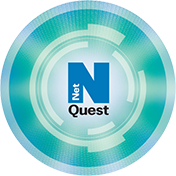What can push an underperforming employee to be more productive and motivated? How can an organization foster greater productivity? The key driver is employee engagement. Engaged employees show up more often, stay longer, and are more productive overall, while disengaged employees have higher rates of absenteeism and turnover. A more engaged workforce makes for a more productive and profitable firm.
There really is no big secret to better employee engagement. Some of the answers are as old and as time-worn as some leadership principles. Read on and find out what we mean.
Team communication and collaboration
Communication is the cornerstone of engagement. Leaders recognize the power of a robust communication plan. Employees need to have a clear and consistent message of the bigger picture, on why they work for you, what their role is and their significance to the company. They should also be able to have a say in that dialogue. These are critical elements in engagement and workplace morale.
Likewise, an organization can leverage IT tools that make communication and collaboration easier. There are well-recognized tools in the market such as Slack and Trello. These tools not only facilitate working together and streamline some processes, but they also foster team chemistry.
A clear direction
Communication also sets the tone in the workplace. Focusing on problems and blame will not lead to an engaged, productive workforce. This is not to say that problems and failures should be ignored and not talked about. They should, however, be approached in a positive, productive manner.
It fits in with communicating solutions and future possibilities, as well as a clear direction or line of sight for the company’s future. In your communication plan, establishing this understanding sets the stage for communicating clear employee expectations and responsibilities. A company’s line of sight will define an employee’s role and work. Employees will feel involved and invested in building the future of a winning organization. Work will not be a drag.
Start at the top
The actions of leaders are key engagement drivers to communicate the company’s direction and values. Leaders can support an engaged workforce by personally living out the company values and demonstrating their commitment to company objectives that hold employee engagement in high regard.
Employees are more likely to be demoralized by bad bosses, who are a source of stress and negativity. Likewise, bad leaders cannot motivate employees in the long term. Senior officers in your organization must create a motivational culture where employees are emotionally invested in their work, where they can flourish and motivate one another.
Training
Training not only leads to skill improvement and greater productivity, but it also leads to better engagement. Employees will feel a sense of purpose, given that their skills are valued and they feel the company is a place where they can grow.
Enhance your training processes with creative ways to reward employee improvement and increase employee engagement. Gamification, which adopts gaming design and concepts to training, is proven to increase learner engagement and make training more fun, as well as improve knowledge absorption.
Autonomy
Most people are strongly motivated by autonomy than financial reward. When managers back off, it allows individuals to take ownership over their work, as well as management of time and resources. For some productivity experts like Robby Slaughter, this is the most effective method of increasing productivity.
When leaders give subordinates freedom over how they work without having to continually micromanage them, it cultivates motivated, productive individuals who can self-correct, self-start, and operate independently. That kind of trust is empowering.
Self-care
Stressed employees are less productive and will eventually burn out. A positive working environment is one where mental, physical, and emotional health is valued. Creating this kind of environment requires a company culture that values healthy communication: listening to employees, giving constructive feedback, fostering meaningful work, and establishing clear parameters for success. Leaders can also be models of self-care by practicing a healthy work-life balance.
Great perks
Perks can greatly contribute to increased morale and better job satisfaction, which then contributes to increased employee engagement and productivity. Think about perks that reinforce self-care and demonstrate how much the company values its employees, like a gym membership subsidy. Even simple extras like a daily free lunch or a complimentary haircut reap increased happiness and loyalty.
At NetQuest, we provide tools to work side by side with a firm’s management in cultivating employee productivity. We have the expertise to evaluate your technology and how to best use or upgrade your IT infrastructure, so it fosters a more engaged and productive workforce. Contact us today and learn more.
Like This Article?
Sign up below and once a month we'll send you a roundup of our most popular posts


